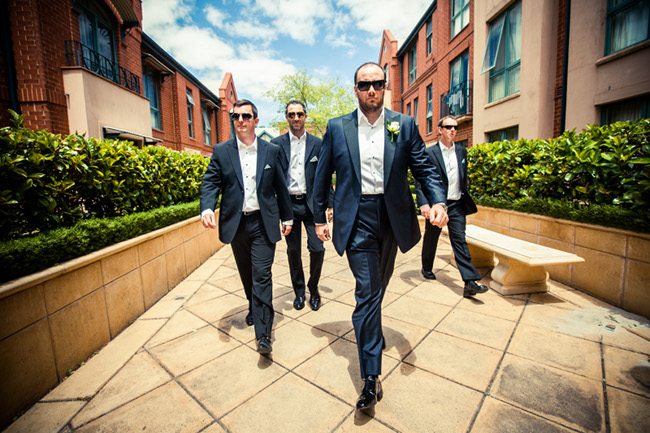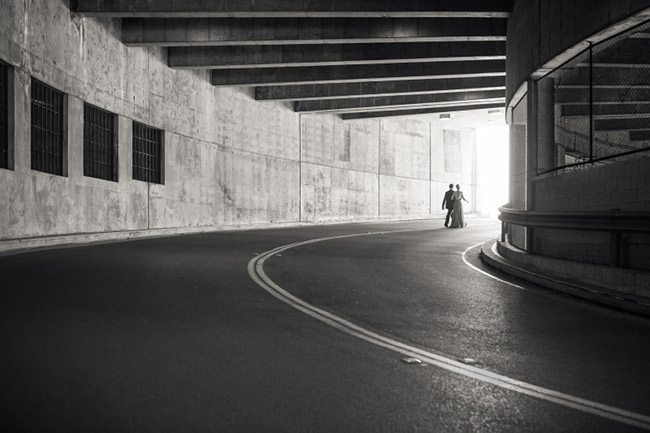
James Field is one of the best wedding photographers in Australia as well as being brilliant at the “business” of photography (although he’d never admit it).
He’s also my really good friend.
I asked him to be our second Tyrades participant – where I interview successful people who are NOT in the blogging or online marketing space – and he kindly agreed.
This interview is packed full of practical and hard-earned information that applies to any business. I was absolutely blown away by some of the marketing insights that came out of this one. You’ll see:
- How he went from part time photographer to full-time business owner with staff and entrepreneurial endeavours on the side.
- How he “sells” his wedding photography packages and stays booked almost every weekend of the year, months in advance.
- What traits, tips and methods make him so successful growing a client base and attracting new business.
Come check it out. I know you’re going to find some gems.
Q. Like a lot of self employed people, you used to have a “real” job and do photography part time. How did you make the leap to full time and what was that like?
I was super lucky that the full time (product design) job I had was largely project based, so I could arrange things such that I could slow one down one as I increased the other. It was a pretty intense 12 months or so, and it was very challenging to keeping my projects in the air and working while on my business in every spare minute. Gradually I took on fewer and fewer projects while the photography grew.
I’m glad I never had to ‘jump ship’ from one stable career into the unknown. By the time I made the decision to switch, the photography was already more secure and profitable than the design was.
Q. Referrals are a huge part of your business – especially brides talking to each other. Do you just rely on quality photography to do the talking or are there other things you do to grow that word of mouth?
You’re right – brides talking to each other is where 90% of my work comes from. The city I live in isn’t huge (just over a million people) but it is like a big county town where everyone seems to know everyone. My word of mouth networks are currently working really well due to no fault of my own.

I don’t go out of my way to encourage brides sharing the love. I should do. I don’t offer referral programs, although every now and again I’ll send gifts to past brides who refer a lot of work my way. I never watermark images, but it doesn’t stop people finding out about me from people who see my work on Facebook. (If someone wants to know which photographer shot their friend’s of friend’s wedding, in my experience they’ll ask!)
Getting back to your question though, I believe the quality of the photos themselves is only a small part of where my (wedding) referrals come from. If a couple is paying a wedding photographer a significant sum, they expect the photos to be good. Most of my word of mouth comes from understanding clients’ needs and offering above and beyond service.
For example, lending my wedding expertise wherever it is needed (after all, I’ve done more weddings than anyone in the bridal party!) helping the bride relax when something goes wrong, sewing her torn veil (with my emergency sewing kit I always bring), and being the only one in the room who can successfully pin the grooms flower on or tie a decent double windsor knot.
As part of this, it’s super important to be able to sit with the boys in the morning and share a beer with them, and be sensitive to girls who might not want their photo taken at 8am before coffee, makeup or hair. I spend much more time analysing the dynamics and mood of the group, finding out which of the groomsmen the others like to hang shit on etc., and how to best integrate myself. Anyone, with enough practice, can take beautiful photos, but not everyone can integrate themselves into whatever group they happen to be with that day.
By the time I leave the reception at midnight, before the bride has seen a single photo, the whole bridal party (and the guests) is convinced that I’m an amazing photographer. At that stage it’s got nothing to do with how my photos turn out, it’s how I make them feel on the day. Surprisingly, that’s the stuff people remember.
Ramsay’s takeaway: This is the essence of branding. Your “product” is not just the physical thing you’re selling or promoting. It’s the look, feel, service and entire experience around it. James really understands his market and, more importantly, that they’re paying for more than just the photos.
Q. You have a nice little room where you sit and chat with potential clients. This strikes me as being quite a unique idea. How does it work and do you have any tips that you’ve noticed help “close the deal”?
This comes out of necessity from working from home, and not having an office/studio to meet in. It doubles as our sitting room, but for tax benefits, it needs to look ‘businessy’ enough that I can claim it as a business space, and therefore pay less interest on my home loan at the end of the day. 🙂
I love meeting with clients in a personal space. It gives them a really good feeling of who I am, and what I’m about. My ‘deal closing’ largely comes from having a good relationship with my clients, rather than my photography skills. I need to show them in as short a time as possible that I’m a relaxed guy, and that I’m going to be fun to have around on one of the biggest days of their lives. After all, who wants to spend their whole wedding day with an awkward stranger?
SO… first things first – I need to get a drink into the hands of the clients when they walk in. And by drink I don’t mean water, boring black tea or average coffee. This is so important. Having a couple sitting there sipping water feels like a business meeting, but when we’re all going through a bottle of red together, a pot of boutique tea or a real coffee (I make good coffee), it feels so much more like friends hanging out.
Like you said, I’ve got a nice little room, with a nice view of the valley – again it talks pretty strongly about the type of person that I am. I love nature, natural beauty, and well-restored 70’s Australian designed furniture. It’s pretty common that someone comments about some aspect of the setting, house, fit out, etc.

An instagram I took while working in James’s meeting room. What a view!
One thing I have found is that it’s important to know just enough about a wide variety of things so you can sit with a complete stranger and ask intelligent questions about things that they enjoy and are experienced in – a great way of breaking ice, and forming bonds quickly. People love to talk about things that they’re experts in and you’re not. In my case, it’s also a good way of levelling the playing field.
As far as closing the deal goes, I don’t use any pressure techniques. I do tell couples how many weddings I shoot a year or how many I normally shoot in whatever month their getting married in, and (since I get booked every single Saturday in the non winter months) it generally provides enough incentive for them to book quickly if they like me.
This may not be particularly helpful for your readers, since it’s a bit of a unique situation, but about 9 out of 10 couples who end up in my living room will book me. I think a big part of this is due to having a detailed description of what I do on my website, so before couples meet with me, they have a good pretty good idea that I’m what they’re after. It definitely helps minimise wasted time on my part and theirs to know that I’m within their budget before they arrive on my doorstep.
Ramsay’s takeaway: James uses a gentle form of scarcity/time sensitivity to ensure that bookings take place by deliberately bringing up how busy he is. This is also a very practical way of using social proof. Note that his web presence acts as a pre-sale page for these meetings which is a very powerful way a blog can get you more clients.
Q. You’ve now branched out into a kind of passive income stream with your photo booth company. What made you do this and was it hard to expand into something new?
This was an opportunity that evolved from something I put together 10 years ago for my 21st birthday party. It was basically a camera on a tripod, hooked up to an old CRT monitor and an awkward wired remote, to allow people to take photos of themselves. It was such a hit that, years later, I offered a more refined version to some of my wedding clients. By this time I’d seen a lot of traditional enclosed booths and ralised that the open-air design of my product had a real advantage at events like receptions where everyone knows everyone and the booze is flowing. Perhaps because of my product design background, I could help but keep making improvements on it. Now it’s been through so many design iterations that I’ve lost count.
Similar to my photography business, the photobooth side of things happened very organically.
The demand increased as I increased the functionality of the product. About two years later I now have five of them to keep up with demand. So no, expanding has been pretty simple and somewhat unintentional! I’ve been super lucky that my wife has a marketing and copywriting background. Without her my photobooth company would be a completely different beast. We’ve been able to position ourselves as one of the top tier photobooth companies in our city, with many competitors charging 1/3 of the price, but we’re still getting ample bookings.
I’m a bit of a dreamer – I spurt out all sorts of ideas, and my wife asks the strategic questions so we can more effectively pick and choose which of the crazy ideas have merit and which ones are better left just as ideas.
Ramsay’s takeaway: This is one of the most popular photobooth businesses in Adelaide. It is ridiculous how much people love it and a testament to the importance of building a quality product. I highly encourage you to check out the website because it is one of the best sales pages/videos you’ll ever encounter. Sea (James’s wife) has done an incredible job on it. You can’t watch the video without smiling.
Q. You have a few employees now. How did you know you needed them and do you have any advice for when/who to hire?
Years ago my relationships were getting strained. I was working so hard in my businesses, that so many things were getting left behind. I was working 70 hour weeks, and not seeing friends, SO, family, etc. When my SO and I did catch up, I would literally sometimes fall asleep mid sentence I was so tired.
I wish I had hired my first employee sooner.
I’m a control freak, and hiring people is a pain in the ass. They take ages to train and in that time both you and them are being super unproductive, so it puts you even further behind. However, after 6 months or so I could really feel the weight lifted. People doing lighter load uni courses, or people with flexible jobs like hospitality were a good fit. If I ever had big jobs coming up I could tell them I needed them for a specific time, otherwise we both had a good idea of what work needed to be done. My first employee would come and go a few days a week and keep on top of things of his own accord after a while.

I first look out for skills and characteristics that are an asset to someone like me – being autonomous, having a decent work ethic and being fun to have around. Things like having a good eye for detail, knowing particular software packages, and having an appreciation for photography can all be taught so easily compared to those first few. Give me a hard working enthusiastic person who’s fun to be around and I can teach them the rest.
As far as when to hire – I’d do it before you think you need it. Even if you’re not working 70 hour weeks in your business, an employee to help share the load can be a godsend. Your relationships are so important. Money, in comparison, is much less important. Each day of your life is precious. I also think that my business is precious (albeit slightly less so). Working *in* my business doing the grunt work that I can teach someone else to do, is so much less important than spending time working *on* my business. I really enjoy this side of things, and when I’m too busy processing photos, answering emails etc, my business can get stale and I start resenting it.
Ramsay’s takeaway: Prioritising your family over your business often means relinquishing some control of the day-to-day stuff. This is one of the reasons I advocate outsourcing so often for bloggers. Like James says, do it early.
Q. How does online media help your business? Is it something you use regularly or find that clients demand?
I love video content. I have a few talking head videos on my site that give a pretty good impression of my personality and also give a description of my services in under two minutes. It’s gold. Less people read copy than I’d like, but from the stats on my site, most people are pretty happy to watch a short video. It’s enough to give people an idea that it’s worth taking things to the next level by meeting with me.

Video is used in a very different way on our photobooth website. We have a video that does a great job at showing people how much fun our booths are, but doesn’t show them anything about how they work, what they look like etc. Both these videos have very specific goals, and each shot is engineered to be hard hitting to achieve those goals.
It took almost half a day to shoot the two minute talking head video on my website. The copy was meticulously scripted too – I’m not good at sitting in front of a camera and getting all my points across in two minutes. While I’m good at talking about the same things in person, it takes longer, and someone watching a video online hasn’t committed to spending that amount of time with me. This leads nicely to the next question.
Ramsay’s takeaway: I’ve added videos to my About and Start a New Blog pages in the last month. While they are no where near the quality of the stuff James makes, I’m seeing massive results like more sales and time on site. Try and use video more and more anywhere you want to build trust.
Q. What would be your top tip for someone who is working for themselves and really wants to focus on growing their business to a sustainable and profitable level?
A few here sorry.
Talk to someone who is good at marketing. The good ones know so much more than you do. I used to think marketing was just common sense and good ideas, but after spending a whole lot of time with someone who keeps up with peer reviewed journals and current research, I learned that the way things work in the real world is often not how you’d expect. Get together and figure out strategically what message you’re trying to get across, and then figure out how to nail that message home with every piece of text, photo, video, etc. that makes up your online presence.

Hire a copywriter. The good ones are worth their weight in gold. Expensive, but totally worth it.
Focus on customer service and creating an awesome experience for your customers. Figure out how to exceed expectations at every stage of the transaction process. It’s how you or your service makes someone feel that they remember, not the price, and possibly not even the product or service itself.
Ramsay’s takeaway: Remember that exceeding expectations on the Internet also means things like a beautiful responsive WordPress theme, a fast loading site, etc. It also means taking your website/blog seriously and getting professional help for things like photos, videos, design and anything you’re not able to master.
Got questions or takeaways?
There’s a lot of information to digest here, regardless of what business you’re in. I’d be really interested to know whether you have any big takeaways for blog or website – something you hadn’t thought of before.
Or, if you have a question for James please leave a comment below and I’ll try and get him to come and answer.


Great and very helpful post, per usual! I think the biggest takeaway for me is just how much he connects with his clients on a personal level, rather than very up-tight and business-like. This is something that I see less and less throughout the business world and I think is so very important!
I guess where I am personally having the most difficulty is growing out from that intermediate phase where you have been having the same (moderately-sized) follower/client base for such a long time, and growing it into something as successful as James’s photography business.
Very true.
I’ve worked with James on a few projects now and he’s always amazing with the clients. I really think part of it is that they want to give him the business, not just his business the business.
I feel like your blog is like this too! 😉
But for me, I know the readers that I have are loyal and I am thankful for all of them because I try to make my blog the same way–very warm and inviting on a personal level, but I think I would like to read more on how to get out of the rut of having consistent page views, comments, readers, etc and growing into something larger. The people who find my blog usually stay, but I’m struggling on reaching new audiences without selling out. Maybe you could put together a little post on this topic? 🙂
What do you mean by selling out? Why do you think reaching new audiences means selling out? 🙂
Haha alright alright, selling out is not inevitable, but I do feel like, at least in my niche (fashion blogging), I’ve had quite a few opportunities to vastly expand my reach by accepting to collaborate with a few popular brands, but as I also blog about social responsibility within the fashion industry and the brands that had reached out were not ethical in the slightest, I had to refuse rather than sell out and ‘go big.’
Unfortunately, most socially-responsible/ethical brands are small and working with them does little to grow my blog. But as most fashion bloggers do not take ethics into consideration when working with a brand, it’s much easier for them to grow.
I’ve only been blogging for about a year now and have already grown a bit, but I feel like now I’ve hit a sort of growth stump.
I’m an abstract painter and write about independent apparel … the balance of the following two excepts keeps me sane.
“Another big fear of artists, one much more conscious, is the fear of “selling out” — becoming an artistic “soldier of fortune,” creating works of art for the sole purpose of generating more and more profit.”
“They fought so hard against creating anything but pure art — for the sake of the art alone — that they forgot about the people who would gainfrom it: their audience.”
Find the balance.
Great article. I like information about putting a video on your About page, which you have now done. It’s a really good idea. I was wondering what type of video camera you used to do it – and how you blurred the background?
Hi David.
That was shot on a Canon Rebel T2i with a 50mm lens. It’s not the best for the job though and a bit fiddly. James might be able to suggest a better setup.
Hi David,
Thanks, Ramsay did an impressive job of putting some structure to my incoherent ramblings!
Ramsay is pretty much right on the money. Pretty much all cheap modern dSLR’s do a good job of recording video, but its so much easier if you’ve got a second person to sit behind the camera and make sure the focus is spot on, and the sound levels etc are correct. Its hard to check that stuff when you’re in front of the camera!
A 50mm fixed lens – without zoom (Canon, Nikon, Sony etc all have them) will generally have a really nice wide aperture, say f1.8 or f2.8 (the lower the better) which is what gives you the out of focus background. Again, without a friend to help with a system like that its really hard to make sure you’re focussing on the eyes instead of nose or ears!
I suppose its because its not my background, but I often struggle more with getting really crisp clear audio. Forget about the onboard mic on the camera and find a base level Rode shotgun mic. Shouldn’t be more than $100, and an extra few bucks for a long cable to run it to the camera.
Don’t forget to turn off the humming fridge and aircon before shooting!
I would really say, great post, Ramsay. I would recommend anyone thinking of buying a budget friendly camera to watch this video. I’m not associated with him but he has some valuable advice for using a camera on your website.
http://youtu.be/9HtGhNUtW-E
Thanks Garth!
It is wonderful how ancient marketing wisdom stays golden through the ages. Loved the Ramsay takeaways. Branding done right is such a joy! The biggest takeaway is the outsourcing bit – too many of us try to do it all and end up spending huge chunks of time over things that could easily be outsourced in the false hope that we’re saving money, not quite realizing the true value of our time…better spent doing what we’re best at. 🙂 Getting our priorities right and managing our time accordingly is the basic step.
Thank you Ramsay.
And thank you James, for sharing your wisdom. The photos are stunning! 🙂
Thanks for stopping by, Vidya. Always nice to see you here.
It’s a pleasure Vidya, thanks for the kind words about the photos!
Thanks for the great article. I find a lot of inspiration in hearing others’ stories. I particularly like how he said he went from one job to another, vs the huge leap that people advise you take sometimes when you’re stuck in job dissatisfaction. (Where I’m currently struggling). I also really love that although he looks like a very talented photographer, you can tell his inspiration comes from connecting with people and just being real. It’s gives me hope and helps ground me when I get stuck in fear with starting a new business. So thanks for the Monday morning inspiration. 🙂
Thanks Shawna. Glad you enjoyed the long read!
I just finished my sidebar after years of wanting to and now I have a new project already.
A nice video. of my hed. OMG.
What a great idea, I have to do it. I’m already working on the script. Coming soon stay posted.
Also have a great day!
You’ll be great on video, I know it. Make sure you let us know when it’s done.
Great post Ramsay, love that you are covering non-IM topics and relating them back to marketing… interesting stuff that keeps me coming back.
@James keep up the good work and thanks for sharing your story! I’m on my phone now and cant see your full site. I’ll take a deeper dive when I get home and have access to my laptop – want to check out the talking heads 🙂
Hey Steve.
Yeah, I think there are a lot of people doing IM interviews and I just find them kind of boring. The idea with these ones was to show people a few things that business owners are doing to grow “bricks and mortar” businesses because sometimes I think people online forget to treat their business like a “real” one.
Where is the landing page?
Above in the photobooth section.
Loved this interview. I run a small business that deals with customized merchandise for schools, colleges and small businesses. The part where he said that customers value the experience and comfort more than the quality really resonated with me. Of course, quality also matters, but not as much as we think. There are other factors that need to be considered.
I’ve launched my own personal blog recently, and I must confess, your blog has really helped me over the months in coming to this decision. It has been a treasure trove of information for starters like me.
If I may ask, what do you use to make the blue boxes I see in this post? They look kind of cool to highlight something to the reader.
Hi Salman.
Those blue boxes are just done manually in the WordPress stylesheet. Just find your blockquote code and tweak it to make it look how you want. Here’s a tutorial I did on it: https://www.blogtyrant.com/the-little-box-that-increased-my-ctr-on-everything-make-one-in-5-mins/
Thanks Ramsay. After reading your post, it seems pretty easy. One of the reasons I love WordPress. There is a lot we can do with it, and the community really goes out of their way to help everyone.
Completely agree.
Hello Ramsay,
Just wanted to update you on something.
I was browsing Copyblogger website and noticed the blue-box they’ve in their Snippets (example: http://my.studiopress.com/snippets/author-box/).
So, just to poke around, I checked the CSS they’ve used and was surprised to see that they haven’t used blockquotes at all. Just simple div tag with a custom class.
If what we’re writing is part of the article, but we still want to highlight it, wouldn’t this be a better option from SEO perspective. Using blockquote tag may confuse the search engine crawlers.
What do you think? Just wanted to know your views on it.
Thanks
Hello Ramsay,
I was very interested in the interview and one thing which really caught my attention had to do with the part you asked about his referrals.
And one thing I took from it is simple; quality work sells itself as people kept referring him clients. That means there is something he is doing right.
I think it HELPS to sell it but I don’t think it should be the only thing one does. Glad you enjoyed!
awesome post. I have made notes of things (in my own words, of course), and I will be applying to the things that I do online.
One thing that I noticed on the internet, is that using social proof is the best way of marketing in any niche. I saw myself typing my credit card details for hiring a VA after reading their testimonials from Facebook and Twitter.
I agree. Good social proof is so, so important.
[…] For more details Click Here […]
Love this type of interviews. I usually never made any distinctions between online entrepreneurs and those who make their buck outside of the digital market. Everything can be placed in the same basket, for both online and brick and mortar function the same exact way.
I would love to see even more posts about successful entrepreneurs, who work outside of the digital/internet world- always different things to be learned.
What I consider an important takeaway from this is branding, and unifying online and offline. As offline projects can benefit from having an online presence (whether it be social media or a well designed website), so do online projects benefit from having an offline marketing.
Keep these interviews coming 🙂
Thanks mate.
Yeah, James is really good at that. It all feels very seamless.
gtgytguygyu